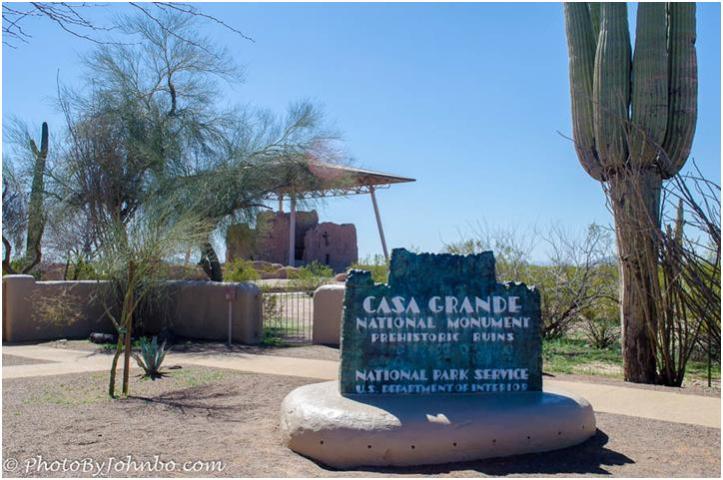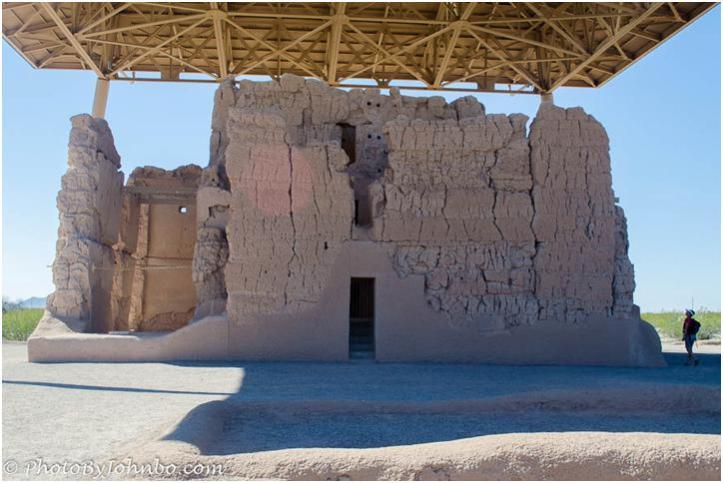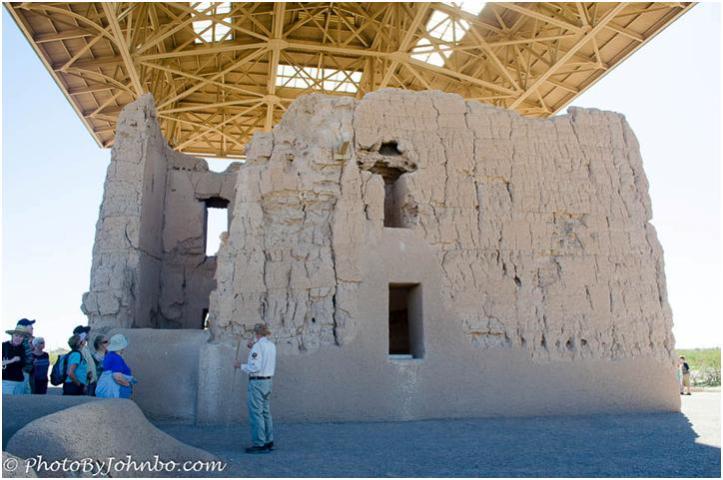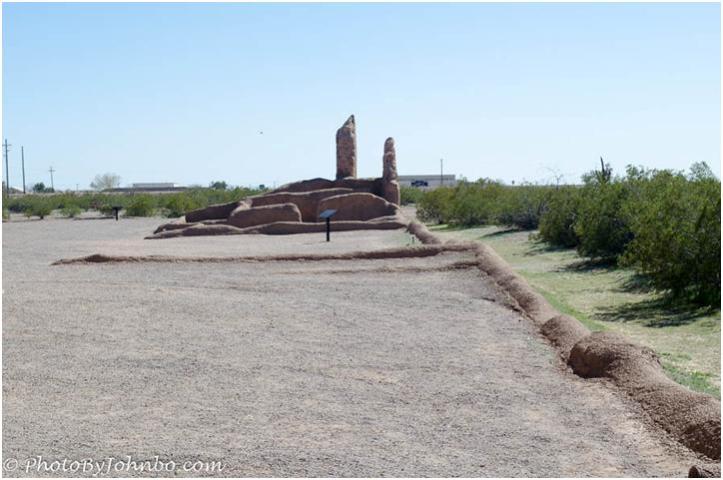
About 50 miles (80 km) southeast of downtown Phoenix, near Coolidge, Arizona lays the Ruins of the Casa Grande (not to be confused with the modern city of Casa Grande, which is located only a few miles further south.) I submit for your approval a journal of images photographed at the Casa Grande Ruins National Monument.

The main structure in the compound, Casa Grande, is four stories tall
The Sonoran Desert in Northern Mexico and Southern Arizona has been populated for thousands of years. Known as the Hohokam, theirs was a prehistoric culture with no written records. As a result, the Hohokam lifestyle and existence can only be surmised by archeological evidence. In addition to communities, that evidence indicates that there are hundreds of miles of irrigation canals in the river valleys of the area. The canals are abundant in the Salt and Gila River valleys and along other waterways in southern Arizona. As the Hohokam settled further from the rivers, they created the intricate canal system to irrigate their crops.

An interior view of the first and second floors of the great house
The term Hohokam is derived from another Native American culture and is defined literally as “the vanished ones.” Artifacts indicate the Hohokam thrived from about 500 A.D. to around 1450 A.D. The archeological record of their existence disappears after that point. Their lifestyle graduated to a fairly sophisticated farming lifestyle as they adapted to the desert and built longer and more far-reaching canals. Between 1350 and 1450, most of their settlements were abandoned.

Closer view of the exterior wall shows a steel reinforcement added to prevent the wall from collapsing
Casa Grande, the “Great House” was probably abandoned at about the 1450 time frame. Part of a large compound, the function of the great house is unknown. The first written accounts of the ruins were found in the journal of Padre Eusebio Franscisco Kino in 1694. In his journal, his named reference to Casa Grande remains to this day. The compound was surrounded by walls that have now been eroded by the centuries. The smaller buildings in the compound were mostly three stories tall.

Interpretive tours are offered daily by park volunteers provide a rich perspective of the ruins
By the 1880s, with the arrival of trains and tourists, the ruins existence was jeopardized by souvenir hunters and other common forms of tourist vandalism. In 1892, during the administration of President Benjamin Harrison, the area surrounding the Great House became the first prehistoric and cultural reserve established in the United States. In 1918, the ruins became a National Monument and responsibility for care of the site was transferred to the National Park Service.

A view of the southeast corner of the compound showing that a structure existed at one time
During the 1930’s, the visitor center and shelter over the ruins were constructed. In addition, a number of adobe buildings were constructed to support park operations. The distinctive shade cover over the Great House was completed in 1932.
Be sure to take the time to listen to the volunteers during an interpretive tour. They provide a wealth of background information on the ruins and the culture of the Hohokam. At the time of our visit, the tours were being held in the afternoon. On the weekends, a longer tour wound around outside the compound’s exterior walls and into the neighboring desert.
John Steiner

[…] One of the rooms inside the ruins of Casa Grande, probably last occupied around 1450 a.d. To view more of the ancient structure, click here. […]
[…] The compound at Casa Grande includes the remains of a large structure in the center core of a courtyard. As shown in this photo, at the outer walls of the courtyard, are found several smaller structural remains in various states of erosion. You can see more images and read more about Casa Grande in an earlier post here. […]